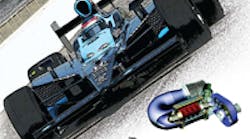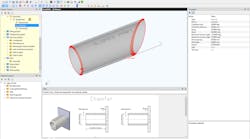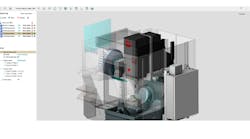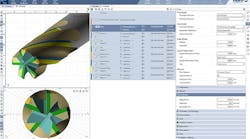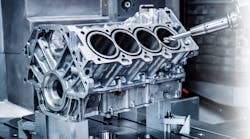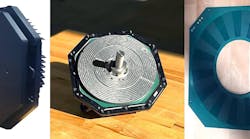The words “precision machining” conjure up images of machines and processes capable of holding tight tolerances in medium to high production part runs.
In machining for performance auto racing, production runs are usually less than 20 parts, and often only one or two parts, but the need for precision, close adherence to engineering design intent, is as demanding as any general machining ever gets.
In an industry where the difference between success and failure, between making or losing tens of thousands or millions of dollars is measured in seconds or even tenths of a second, every component of the race vehicle is expected to be as close to perfection as human thought and effort can make it. That is especially true for machined parts.
In auto racing, which includes everything from go-carts and motorcycles to the most powerful drag racing, road racing, offroad racing and oval track racing machines, driving and team management skills are critical. But the best driving and team management skills in the world won’t win a race if the race vehicle doesn’t have the potential to beat the competition. Engines must produce the most useable horsepower possible under prevailing racing class rules. Transmissions, axles and rear ends must transfer that horsepower to the wheels as efficiently as possible. And chassis and suspension components must be adjusted, or “tuned” to match a driver’s needs and prevailing track conditions. Every one of those components uses machined parts and every part must meet or exceed the original design intent in order to give the race team the best possible chance of winning.
Compounding this situation is that engineering designs can, and often do change from race to race resulting in production times from part order to part delivery being measured in days rather than weeks or months.
That means that machine shops that want to successfully service any segment of the performance racing industry profitably must have machines and processes in place to produce very short production runs of high-precision parts very quickly.
Having the right machines is rarely a problem. While companies such as Haas Automation, Inc., Okuma Corporation, Mori Seiki Co., Ltd and others make sophisticated machines designed or adapted to meet the needs of the most demanding auto racing teams, most machines used in general production are capable of doing the necessary work. Almost all machining of performance racing parts can be done on 2- and 3-axis machines. One notable exception is engine porting – shaping and smoothing exhaust ports – which is done either by hand or by using 5-axis simultaneous machining.
The main problems with successfully supplying parts to race teams are process-related. The process used to turn a customer’s drawings or part model into the finished product.
While lead times in other industries are normally measured in weeks or even months, lead times needed in auto racing can be only a few hours or a few days. In NASCAR, the top dog of American auto racing, the time it takes to implement a design change and produce the needed part is sometimes measured in minutes.
The only way to successfully and profitably meet those kinds of delivery demands is to have a process in place that transforms a customer’s drawings or part models into G-code for the CNC machine and, when needed, into programming for CMM part inspection. That is where a shop’s success will be determined by the quality of the computer software used to support that process rather than the quality of the machining process itself.
While machine setup and machining cycle times are usually measured in minutes or a few hours, converting drawings or part models into verified G-code for a CNC machine can take a few minutes, or it can take more than a day. Converting those same drawings or part models into effective programming for a CMM machine can take days and sometimes even weeks. The differences in those programming times is determined by how integrated, compatible and complete the software used in those processes is.
Shops where 1- and 2-part production runs with fast delivery times are normal inevitably use a fully integrated 3D Computer Aided Design/Computer Aided Manufacturing (CAD/CAM) system. Most of the major CAM software packages either come with an integrated CAD module or have been integrated to some degree with the most popular CAD software packages such as SolidWorks or Autodesk’s Inventor.
When a customer supplies part drawings rather than a 3D part model, valuable time is lost converting those drawings into the computer file format needed by the shop’s software, and the potential for conversion errors is increased. Consequently, shops offering fast part turnaround of precision parts usually require customers to submit 3D part models rather than drawings. The customer’s part file format may not be the format needed by the shop’s software, but in the last few years, file format translation software and functionality has improved so that translation errors are much less of a problem today than they were just two years ago.
One serious and time-consuming problem that remains is the effective transfer of geometric dimensioning and tolerancing (GD&T) data from the customer’s engineering department to the shop floor.
At this time, there is no industry-wide standard file format in place for transmitting GD&T data electronically via a 3D CAD file that can be used by CAM and CMM programming software without substantial manual inputting of the data. There is a proposed standard, but its acceptance and adoption is a work-in progress rather than an achievement.
Fully integrated CAD/CAM/CMM packages that use proprietary file formats such as Siemens PLM Software’s NX package are able to capture and transmit GD&T data from one module to the next, but there is still some manual input required either to enter the data from a non-proprietary file format or reenter the data in some modules, especially modules that generate program code for CMM machines. All manual input slows the production and delivery process, increases costs and makes a shop less competitive, less successful and less profitable than it could otherwise be.
CMM programming, a necessary component for verifying precision machining, is still a major bottleneck in the overall production process. Ways to reduce this bottleneck were examined in “How to reduce the CMM programming bottleneck”, American Machinist, January 2009, page 36.
If a shop wants to get into supplying parts to the performance racing industry, it does not have to invest big bucks in the latest and greatest machines. It does, however, need to invest time and money developing and implementing a production process that will enable it to deliver high-precision, low-volume parts in the shortest time possible. The more that process can be automated the faster and less error prone the process will be, and that requires acquiring and implementing the most appropriate and effective software available.
Because of the improvements in ease of use, features, functions and compatibility that CAD, CAM and CMM programming software that have been implemented in the last two to three years, one of the least expensive ways a shop using older software can significantly improve its production processes is to either upgrade its existing software to the latest and greatest versions or to acquire the newer, feature- and function-rich software that is now available.
Tens of thousands of people all over America are engaged in one form of auto racing or another, and they need shops that can produce high-precision parts quickly.
